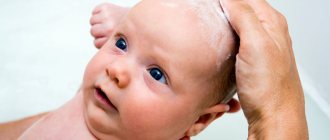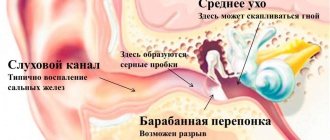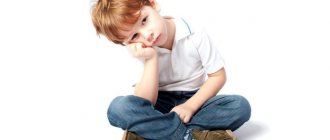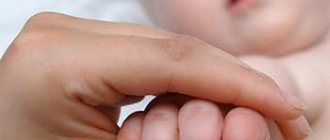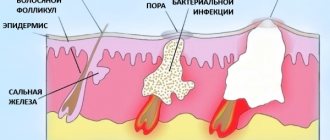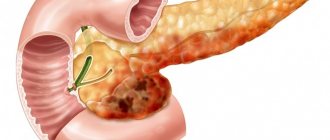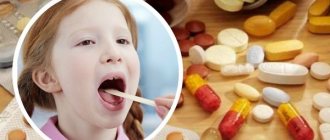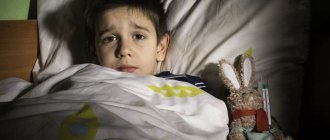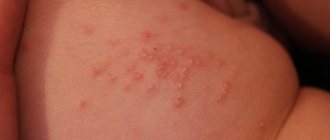Main features
Many mothers know what seborrheic dermatitis looks like on the baby's head, because it occurs quite often. It can be:
- Yellowish crusts that cover partially or completely the scalp of the baby's head. Their greatest concentration may be in the parietal part. The scales accumulate in a dense layer.
- Crusts can also form on other parts of the body. In rare cases, they are found on the neck, face and behind the ears.
- Yellow crusts on the head are not accompanied by inflammation and do not cause irritation. This is how they differ from atopic dermatitis.
- The crusts look unattractive, but do not cause itching. They do not cause negative feelings to the child.
Yellow crusts on the head of a newborn most actively appear between the ages of 10 days and 3 months. How long will they last? This depends on the individual characteristics of the baby’s body.
Most often, crusts on a child’s head disappear without a trace before the age of one year, and sometimes they persist up to 2-4 years. Being under the hair, they do not cause any difficulties when combing the baby.
Causes of yellow crusts
Experts have not established the exact causes that lead to the appearance of seborrheic dermatitis. There are only the following assumptions:
- The process of formation of the endocrine system. When developing in the mother's womb, the child receives the necessary hormones from her. After his birth, their withdrawal begins, which causes a malfunction of the endocrine system. The activity of the sebaceous glands increases, and excess sebum accumulates on the skin in the form of scabs. This is how yellow crusts form on the baby’s head.
- Negative influence of external stimulus. Crusts may appear due to prolonged wearing of the cap. They can be triggered by sweat and heat. Washing your hair frequently can also cause flakes. An incorrectly selected shampoo causes the top layer of skin to dry out. This is what provokes a malfunction of the sebaceous glands.
- Food quality. The occurrence of seborrhea on the baby's scalp may be his body's response to the mother's unbalanced diet. It is possible that through breast milk the baby receives certain substances that affect its endocrine system. The same applies to artificial feeding. After all, the mixture can be poorly tolerated by the child’s body and provoke the appearance of crusts when complementary foods are introduced early.
- Activation of the opportunistic fungus Malassezia furfur. It constantly lives in human skin. Hormonal imbalance contributes to the rapid proliferation of fungus and the appearance of yellow crusts.
- Due to the fact that the baby’s immune system is not yet very developed, the above fungus multiplies, which disrupts the functioning of the sebaceous glands.
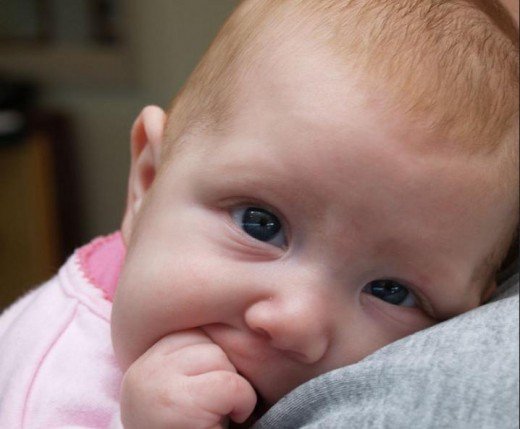
- Low weight, infectious diseases and heredity also negatively affect the immune system, which can lead to crusts.
Types of sores on the head: their signs and treatment
There are a large number of diseases associated with skin and hair problems.
“Sores” on the head #8212; not just an aesthetic nuisance. In most cases, they indicate serious problems in the body. In the absence of proper treatment, the matter is not limited to ordinary itching. A rash, dandruff, and dry crusts appear on the scalp; the process may result in hair loss.
Causes of scalp diseases
Skin diseases, like most others, occur when the immune system is weakened. If the body is weakened, it loses its ability to resist infections and parasites.
The presence of constant nervous stress, stress, lack of sleep is also the cause of poor immune function.
Immune defense weakens with an unbalanced diet. The occurrence of dandruff, for example, can be triggered not only by fungal microorganisms, but also by a common lack of essential microelements.
One of the reasons why sores appear on the head is a metabolic disorder. Poor functioning of the sebaceous glands gives impetus to the development of dermatitis. Diseases of internal organs and hormonal imbalances often lead to the appearance of cystic formations.
The appearance of painful areas on the head in the hair can be caused by the development of oncology, infection with ringworm, taking medications that are inappropriate for the patient, or allergies.
Head wounds, in addition to injuries, can appear when an infection of a viral, bacterial, or fungal nature enters a weakened body. When immunity decreases, the body cannot cope with illnesses on its own. Over time, weeping areas of skin irritation become wounds, sometimes even purulent. The infection spreads when problem areas are scratched and in the absence of disinfection.
The cause of hair loss can be simple mechanical damage to the skin, the use of hairpins and other accessories that provoke the appearance of wounds on the head.
Heredity, allergic reactions, and unfavorable ecology greatly complicate treatment.
Symptoms of major scalp problems
Household mites
A very common cause of itchy and flaky scalp is mites. Scabs and dandruff are the first signs of the activity of these parasites.
Removing parasites is quite easy. There are many effective medications and traditional methods for this.
Seborrhea
Sores on the scalp occur due to dysfunction of the sebaceous glands, poor nutrition, and deficiency of certain vitamins. Pathology may be associated with diseases of the nervous system or HIV infection.
Inflammation, crusts and peeling are observed in the hair and face. In some cases, seborrheic dermatitis develops.
It is characterized by itching and dandruff. And this is not necessarily due to poor hygiene. Even the best and most expensive shampoo will not help if the sebaceous glands are disrupted and the immune system is weakened.
Contact dermatitis
It can be caused by an allergic reaction to various objects or organisms with which a person has been in contact. The place of contact turns red, there is a feeling of itching and burning that does not go away on its own.
The doctor must find out the nature of this reaction and prescribe an antiallergic drug.
It can be mild or severe. With mild headaches, the head itches and small raised plaques appear on the skin, which can be gotten rid of with a special shampoo.
In severe cases, when there is an increase in regional lymph nodes, the help of a doctor will be required.
Seborrheic eczema
Lichen planus red
Herpes zoster
Ringworm
Pityriasis versicolor
Eosinophilic folliculitis
Microsporia
Very contagious. Transmitted from animal to human. The rash in the form of bubbles gradually expands in area. The hair dries out and begins to break.
Trichophytosis
Exists in two forms. When it is superficial, a rash appears, the skin peels, hair breaks easily and falls out. Dark dots remain in their place. In the second case, you can also lose hair, but at the site of hair loss there will be reddish-brown bumps.
Favus (scab)
Fungal skin infections lead to itching and burning. Yellowish crusts with an unpleasant odor appear in this area. They may bleed. Hair becomes brittle and loses its shine. It sometimes takes several months to cure a patient.
Itching, redness and rashes, all the negative phenomena presented in the photo are only the visible part of the problem. Scabs and falling scales can lead to the development of such serious consequences as:
- microbial eczema;
- protein in urine;
- even cancer skin problems.
Recommendations on how to treat dandruff and scalp sores depend on the results of tests and analyses. In the mildest cases, patients receive advice from their attending physician on the use of ointments, gels, and serums that have a general tonic or antifungal effect. In more severe cases, local treatment of the areas where the sores appear is not enough. Then apply:
- antibiotics;
- drugs that have a positive effect on intestinal microflora; removing toxins from the intestines;
- antihistamines - for allergies.
Patients who have undergone subcutaneous injections or laser treatments respond positively to these methods. Substances that kill the infection are injected under the skin, and wounds on the head are well disinfected using a laser. Complex therapy, including massage and the influence of a steam capsule, works quite effectively and quickly.
Traditional methods
Tested by time and in effectiveness are not inferior to the means invented in our time. Of course, they should not be used in advanced cases.
In combination with drug treatment, the use of decoctions of St. John's wort, oak and chamomile will be a good help. Collections of celandine, string and calendula will greatly alleviate the patient’s condition. And tar soap will be useful not only during the course of treatment, but also in the future, to prevent relapses. Herbal rinses will help not only sick hair, but also preserve the beauty of healthy hair.
It is better to discuss all the causes and treatment of the disease with your doctor so as not to harm your skin. An ordinary scratch can lead to dire consequences. The question of what happened to the skin and how to treat it should always be asked to a specialist.
https://golovnie-boli.com/bolezni-golovy/bolyachki-na-golove.html
What treatment is given
Yellow crusts on a baby's head do not pose a threat to the baby's life. Treatment of seborrhea does not require the use of serious medications; it can disappear from the skin on its own over time. To quickly get rid of unpleasant seborrhea, in many cases, pediatricians recommend taking the following measures:
- Lubricate the crusts on the head, neck and eyebrows with oil. To do this, you can use the following types: peach, almond or olive. The product can be purchased in bottles or as a spray.
- You can use various cleansing creams and emulsions to treat rashes. Under their influence, the crusts soften, but it is not recommended to comb them out; it is enough to wash the child’s hair thoroughly. And remove the remains by hand. In addition, cosmetic products contain substances that regulate the functioning of the sebaceous glands. The increased secretion of sebum gradually decreases, and crusts do not form. It is best to apply the product at night and carefully remove the scales in the morning.
- You can wash the baby's head with antiseborrheic shampoos. They are applied to damp hair and rubbed until foam forms. After holding for 5 minutes, the shampoo is washed off. There are several types of remedies; your pediatrician will help you choose the most effective one.
- Mothers can use dermatological creams. They are applied to the child’s scalp twice a day without rinsing off. Creams are effective against microbes and can quickly restore the functioning of the sebaceous glands.
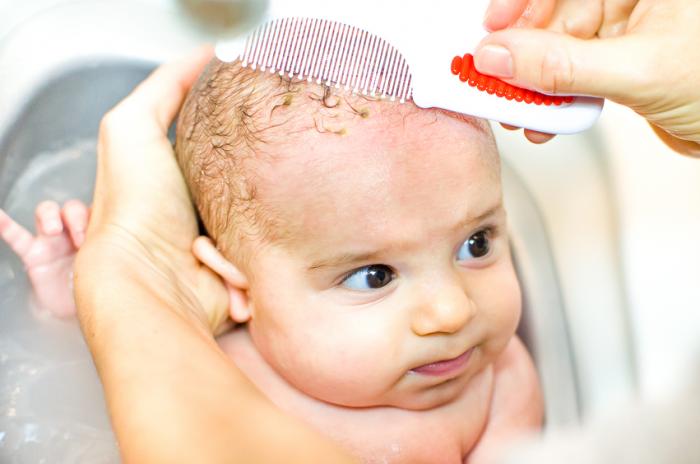
Any of the listed remedies should be used only after it has been prescribed by a specialist, but not more than 2 times a day. In addition to medications, you can get rid of yellow crusts on a baby’s head using traditional medicine. There are gentle and proven methods.
Types of sores on the head: their signs and treatment
There are a large number of diseases associated with skin and hair problems. “Sores” on the head #8212; not just an aesthetic nuisance.
In most cases, they indicate serious problems in the body. In the absence of proper treatment, the matter is not limited to ordinary itching. A rash, dandruff, and dry crusts appear on the scalp; the process may result in hair loss.
Causes of scalp diseases
Skin diseases, like most others, occur when the immune system is weakened. If the body is weakened, it loses its ability to resist infections and parasites.
The presence of constant nervous stress, stress, lack of sleep is also the cause of poor immune function.
Immune defense weakens with an unbalanced diet. The occurrence of dandruff, for example, can be triggered not only by fungal microorganisms, but also by a common lack of essential microelements.
One of the reasons why sores appear on the head is a metabolic disorder. Poor functioning of the sebaceous glands gives impetus to the development of dermatitis. Diseases of internal organs and hormonal imbalances often lead to the appearance of cystic formations.
The appearance of painful areas on the head in the hair can be caused by the development of oncology, infection with ringworm, taking medications that are inappropriate for the patient, or allergies.
Head wounds, in addition to injuries, can appear when an infection of a viral, bacterial, or fungal nature enters a weakened body. When immunity decreases, the body cannot cope with illnesses on its own. Over time, weeping areas of skin irritation become wounds, sometimes even purulent. The infection spreads when problem areas are scratched and in the absence of disinfection.
The cause of hair loss can be simple mechanical damage to the skin, the use of hairpins and other accessories that provoke the appearance of wounds on the head.
Heredity, allergic reactions, and unfavorable ecology greatly complicate treatment.
Symptoms of major scalp problems
Household mites
A very common cause of itchy and flaky scalp is mites. Scabs and dandruff are the first signs of the activity of these parasites.
Removing parasites is quite easy. There are many effective medications and traditional methods for this.
Seborrhea
Sores on the scalp occur due to dysfunction of the sebaceous glands, poor nutrition, and deficiency of certain vitamins. Pathology may be associated with diseases of the nervous system or HIV infection.
Inflammation, crusts and peeling are observed in the hair and face. In some cases, seborrheic dermatitis develops.
It is characterized by itching and dandruff. And this is not necessarily due to poor hygiene. Even the best and most expensive shampoo will not help if the sebaceous glands are disrupted and the immune system is weakened.
Contact dermatitis
It can be caused by an allergic reaction to various objects or organisms with which a person has been in contact. The place of contact turns red, there is a feeling of itching and burning that does not go away on its own.
The doctor must find out the nature of this reaction and prescribe an antiallergic drug.
It can be mild or severe. With mild headaches, the head itches and small raised plaques appear on the skin, which can be gotten rid of with a special shampoo.
In severe cases, when there is an increase in regional lymph nodes, the help of a doctor will be required.
Seborrheic eczema
Lichen planus red
Herpes zoster
Ringworm
Pityriasis versicolor
Eosinophilic folliculitis
Microsporia
Very contagious. Transmitted from animal to human. The rash in the form of bubbles gradually expands in area. The hair dries out and begins to break.
Trichophytosis
Exists in two forms. When it is superficial, a rash appears, the skin peels, hair breaks easily and falls out. Dark dots remain in their place. In the second case, you can also lose hair, but at the site of hair loss there will be reddish-brown bumps.
Favus (scab)
Fungal skin infections lead to itching and burning. Yellowish crusts with an unpleasant odor appear in this area. They may bleed. Hair becomes brittle and loses its shine. It sometimes takes several months to cure a patient.
Itching, redness and rashes, all the negative phenomena presented in the photo are only the visible part of the problem. Scabs and falling scales can lead to the development of such serious consequences as:
- microbial eczema;
- protein in urine;
- even cancer skin problems.
Recommendations on how to treat dandruff and scalp sores depend on the results of tests and analyses. In the mildest cases, patients receive advice from their attending physician on the use of ointments, gels, and serums that have a general tonic or antifungal effect. In more severe cases, local treatment of the areas where the sores appear is not enough. Then apply:
- antibiotics;
- drugs that have a positive effect on intestinal microflora; removing toxins from the intestines;
- antihistamines - for allergies.
Patients who have undergone subcutaneous injections or laser treatments respond positively to these methods. Substances that kill the infection are injected under the skin, and wounds on the head are well disinfected using a laser. Complex therapy, including massage and the influence of a steam capsule, works quite effectively and quickly.
Traditional methods
Tested by time and in effectiveness are not inferior to the means invented in our time. Of course, they should not be used in advanced cases.
In combination with drug treatment, the use of decoctions of St. John's wort, oak and chamomile will be a good help. Collections of celandine, string and calendula will greatly alleviate the patient’s condition. And tar soap will be useful not only during the course of treatment, but also in the future, to prevent relapses. Herbal rinses will help not only sick hair, but also preserve the beauty of healthy hair.
It is better to discuss all the causes and treatment of the disease with your doctor so as not to harm your skin. An ordinary scratch can lead to dire consequences. The question of what happened to the skin and how to treat it should always be asked to a specialist.
https://golovnie-boli.com/bolezni-golovy/bolyachki-na-golove.html
Traditional medicine
How to remove yellow crusts from a baby's head? The main method of treatment includes the use of various oils: sea buckthorn, sunflower or olive. They are able to soften the scales, which will allow mom to easily remove them. The treatment process goes as follows:
- The affected area is generously lubricated with oil and left for 20 minutes. Before the session, you should not moisturize your baby's hair.
- In order for the crusts to soften well, you need to put a hat on the baby’s head.
- Using a soft brush, parents carefully remove the crusts from the head.
- The baby's hair is washed with shampoo to remove any remaining oil.
- If after this the scales remain on the scalp, they are passed over them again.
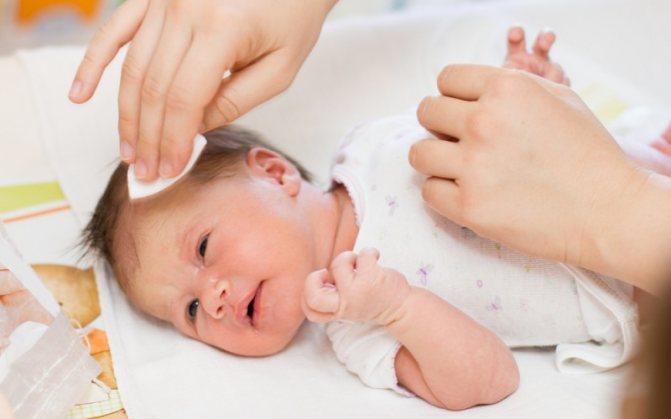
The same method will help remove crusts on the eyebrows and behind the ears. Parents should monitor the effect of the cream or shampoo. If an allergic reaction occurs, use of this product should be discontinued.
Treatment of jaundice in newborns
In most cases, jaundice in babies goes away on its own and does not require drug treatment. Usually, in the first days of life, the baby is with the mother in the maternity hospital under the supervision of doctors, so this condition of the newborn will be promptly recorded. Particular attention should be paid to the appearance of early jaundice if it appears in the first 24 hours of life. Such children should be examined by a neonatologist.
To determine the level of bilirubin in the blood, a general test is prescribed, which is taken from the heel of the newborn in the first 72 hours of life. This mandatory test is called neonatal screening of the newborn. Bilirubin levels can also be measured through the skin using a special device.
The test results provide three indicators of bilirubin:
- General,
- Direct (conjugated, bound) bilirubin,
- Indirect (unconjugated) bilirubin
In a full-term baby with physiological jaundice, the level of indirect bilirubin in the blood should not exceed 220 µmol/l. In a premature baby, this limit is lower - up to 205 µmol/l. Values above 340 µmol/L require blood transfusion.
In serious cases, if the level of bilirubin in the blood is alarmingly dangerous, a blood transfusion is prescribed and drugs that improve liver function are used: phenobarbital, sorbents (enterosgel), vitamin E.
Consuming a sufficient amount of fluid, primarily breast milk, helps cleanse and renew the blood and reduce the amount of bilirubin. To do this, increase the number of feedings: 8-12 times a day or give the baby additional water. Make sure that the baby does not fall asleep near the breast, but eats well.
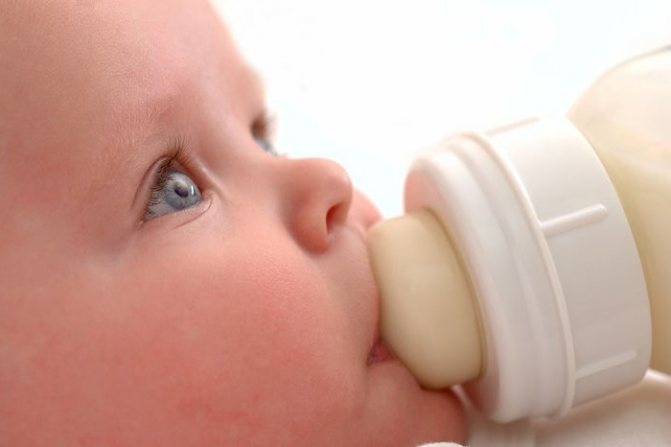
All treatment methods boil down to reducing the amount of bilirubin in the body to prevent its accumulation in the blood and tissues. With the skillful and timely action of parents and doctors, jaundice in newborns is treated quickly, thereby minimizing the risk of complications.
There should be no foreign spots on the child’s healthy skin. Their appearance usually indicates that some pathological disorders are occurring in the child’s body. This article will help you understand under what situations and diseases skin spots appear.
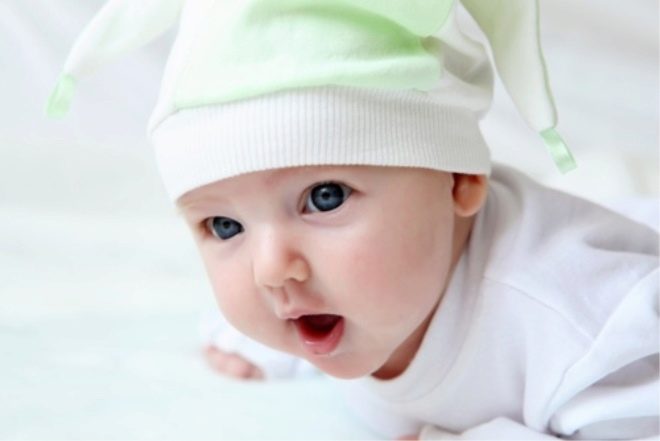
What complications can seborrhea cause?
Complications can appear under the influence of the following negative factors: improper care, unbalanced nutrition or dry skin. Only in such cases do yellow crusts on a baby’s head represent a depressing condition. Negative consequences include:
- Increase in the area affected by scales. They can occupy other parts of the body and cause itching and redness. Sometimes atopic dermatitis develops with an existing hereditary predisposition.
- Through wounds or abrasions in the area of seborrhea, the skin can become infected with streptococci and staphylococci, which leads to suppuration.
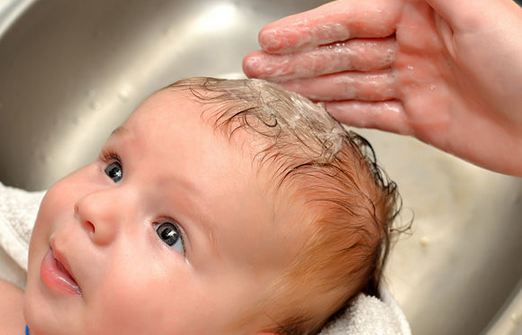
If such symptoms occur, the baby must be urgently shown to a specialist. Indeed, in such a situation, more serious treatment will be needed.
Prevention measures
If the problem is successfully resolved, mothers look for solutions that can prevent its recurrence in the future. Dr. Komarovsky suggests that women during lactation eat properly, reducing the amount of fats and carbohydrates in the diet. After all, this directly affects the fat content of milk.
Other preventive measures include:
- Maintaining the required air humidity in the room.
- Using moisturizers after bathing your baby. This will protect the skin from drying out.
- If yellow crusts are accompanied by itching and redness, this may indicate an allergy. In such a situation, proper treatment from a specialist will be required.
- The baby must be dressed according to the weather, and should not be overly wrapped. If the child's crown and feet are dry, it means he is dressed correctly.

These measures are relevant not only during the treatment of crusts, but also after getting rid of them.
